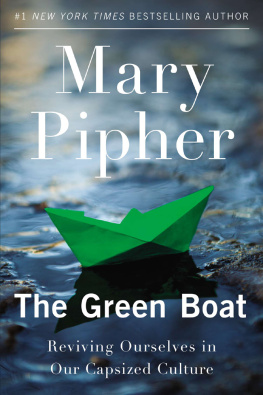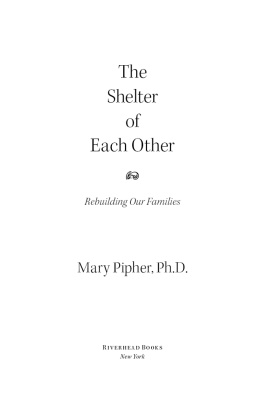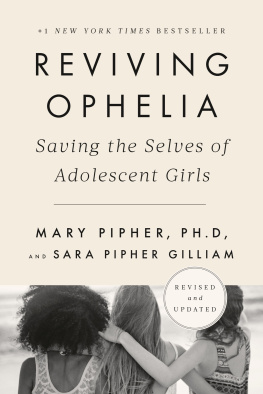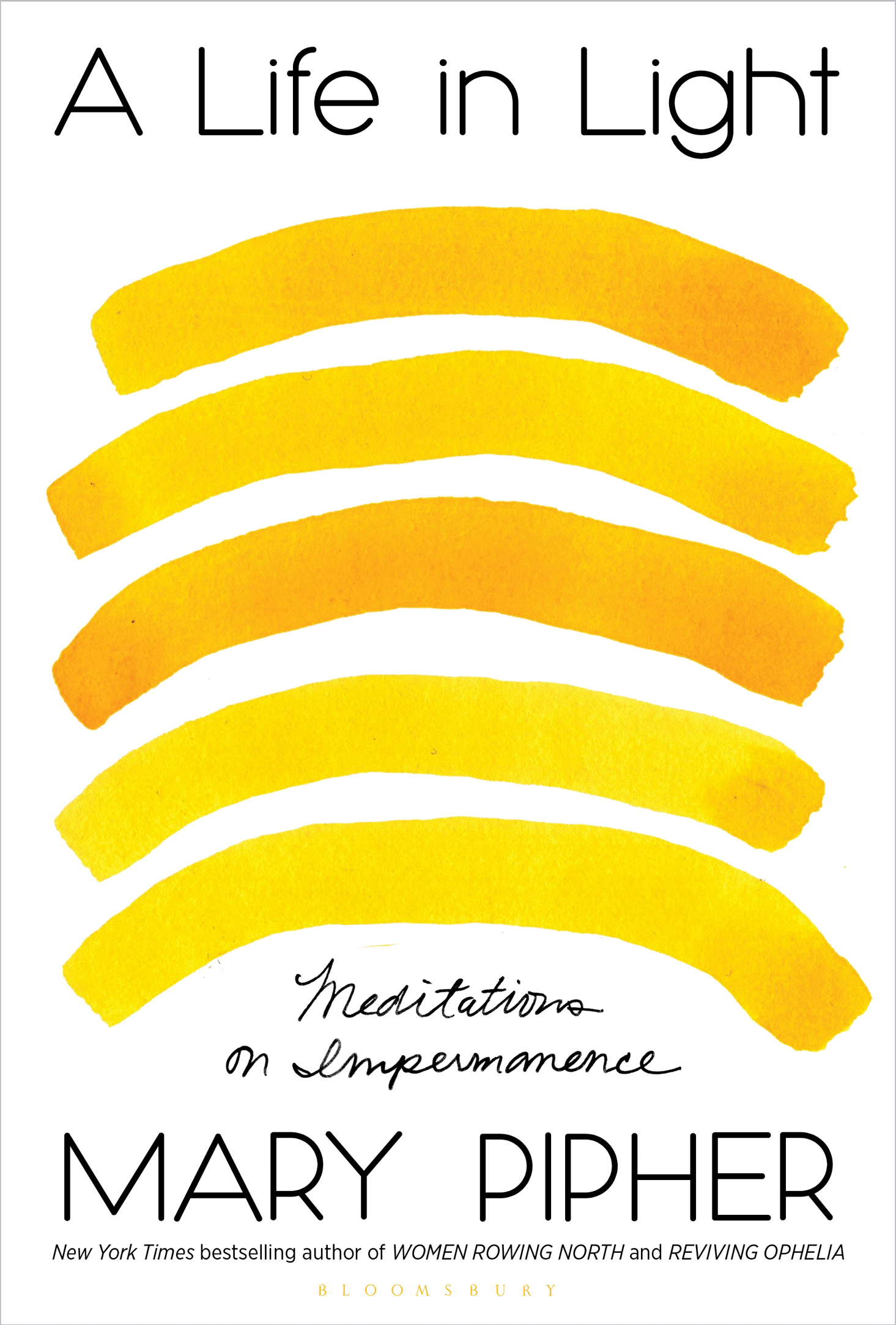Contents
Guide
Pagebreaks of the print version

To Kate Elisabeth Pipher, who brightened the summer of 2020 and who inspired this book; to Claire, a joyful companion in the summer of 2021; to Aidan, who stays in touch.
And to Coltrane and Otis, who still loved us when we reunited in the fall of 2021.
BY THE SAME AUTHOR
Women Rowing North: Navigating Lifes Currents and Flourishing as We Age
The Green Boat: Reviving Ourselves in Our Capsized Culture
Seeking Peace: Chronicles of the Worst Buddhist in the World
Writing to Change the World
Letters to a Young Therapist
The Middle of Everywhere: Helping Refugees Enter the American Community
Another Country: Navigating the Emotional Terrain of Our Elders
The Shelter of Each Other: Rebuilding Our Families
Reviving Ophelia: Saving the Selves of Adolescent Girls
Hunger Pains: The Modern Womans Tragic Quest for Thinness

CONTENTS
Thomas A. Edison was born in 1847, and on October 21, 1879, he invented the incandescent light bulb. I was born on October 21, 1947, one hundred years after Edisons birth and on the sixty-eighth anniversary of his famous invention. By the time I discovered these facts, I was in my forties, but I had already developed a lifelong fascination with light.
Indeed, my first memory is of light dancing in the leaves of a tall tree in my grandmothers front yard in Sparta, Missouri. Aunt Grace had placed me on my back on a blanket under this tree. I remember the sunlight sparkling through the changing colors of the fluttering leaves and the occasional patch of cloud shadow that affected everything. I didnt have language, but I knew what I was watching was beautiful.
I remember nothing else about the first two years of my life, but I recall this as clearly as if it happened this morning. Light sticks in my memory that way. And ever since that seminal moment, dappled light has held the power to induce wonder in me.
I take note of shadows and sunspots and if a cloud crosses the sun. I stop to admire the sparkling dew on grass and flowers, the rainbows in lawn sprinklers, and the way certain kinds of light shine on birds wings or breasts. I notice my cat glistening in the sunbeams and the way light sparkles on nearby Holmes Lake. These minute alterations in light affect me emotionally and even spiritually.
When I swim, the parabolas of light dancing on the bottom of the pool make me happy. So does the way sunlight splashing through rain can paint my porch with light. When I see shafts of sunlight breaking through storm clouds, I pay attention. When we travel, it is light that most astonishes me. Light in the Sandhills of Nebraska, in Alaska, in San Francisco, and in all the mountain towns along the front range of the Rockies.
As a college student and waitress, I avoided living in basement apartments. I cannot stay long in a room without a window, and, during the day, the shades are always up at my house. I would rather shovel horse manure outside than work in a cubicle or back room of a store.
I am solar-powered. As a child, I spent every waking moment outdoors in the summer. I spent my mornings mixing mud pies, cookies, and cakes on wooden slabs under an elm tree. And I spent long afternoons and evenings in our municipal pool. Thats when I began reminding the other children to look at how sunlight twinkled on water.
I am fascinated by every kind of lightsunrise and sunset, light sparkling in fountains, and the light of celestial bodies. A prism anywhere makes my heart sing.
My memory is encoded by light. Whether Ive been hunting for morels along the Platte or listening to my grandson Coltrane play music, I filter my experiences by quality of light. I can tell my story by simply remembering these lightscapes.
One of my favorite words is the Japanese word komorebi , which refers to the interplay of light and leaves as sunlight shines through trees. It has other meanings too. It can refer to a melancholic longing for a person, place, or thing that is far away. Or it can refer to impermanence. Dappled light shows us that what is here now will be gone in an instant. Nothing stays the same.
Resilience is the ability to find light in dark times. We build it by our attitudes, efforts, and coping skills. All of our lives we face crises that require us to grow. Struggle defines and builds us.
As a child, I worked hard to stay sunny. I looked for people to love me, and I basked in the nurturing relationships of those who did. I found solace in the natural world and in swimming. I discovered early the joys of hard work and of helping people and animals. The coping skills I learned as a child have stayed with me. With each life stage, I have used them to stay calm and grounded.
All through my life, Ive loved people and lost them. When I was a child, my father was off in the army in a faraway war. After he returned, I spent a year without my mother. In my twenties, my father died, and in my forties, my mother died. As Ive grown older, Ive had to say goodbye to many people I love.
When I wrote my last book, Women Rowing North , I was in full sunlight. My adult children and all five grandchildren were nearby. I lived a life of travel, family, and friends. On weekends I danced to live music.
That brightness has faded. The young children who surrounded me have grown up or moved to Canada. And the pandemic has created painful separations for our family.
To be happy the last few years, I have needed to grow. I have utilized every skill I know to find the light. And I have learned to look inside myself for the love I cannot find in the world. Ive developed new rituals and routines and now feel a renewed appreciation for life as it is, not as I wish it to be. If the first part of my life was about building attachments, the last two years have been about learning to detach. I am making an effort to find the love and warmth I need in my own heart.
No matter our age, we experience loss. A kindergartener must say goodbye to a beloved teacher at the end of the year. A pet dies. Or a grandparent. And every day we lose the world that was yesterday.
As we age, the losses multiply. We may no longer be in the workplace. Our friends and relatives move away or cross the River Styx. If we have children, they grow up and move on with their lives. We have no choice but to face impermanence.
The pandemic heightened our sense of isolation and loss, but these emotions are inevitable under any life circumstances. Eventually, one way or another, we all say goodbye to everyone we love. However, in the interim, we have the opportunity to grow our ability to find light within our own hearts and to orient toward the light of transcendence, which is finding joy and bliss in the midst of our pain. When we face loss, we can learn to experience wonder in order to restore our balance. There is a way to make this arithmetic work.
We can experience flashes of enlightenment. In the midst of ordinary life, a certain quality of light can transport me into bliss. My self dissolves into deep time.
Bliss is an absolute state. It cant be rated on a ten-point scale, and an experience cant be more or less blissful. If we are experiencing bliss, we are feeling the most wondrous possible experience. Over our lifetimes, if we grow in our capacity to live in the moment and pay attention, we may be fortunate enough to experience bliss more frequently. We may even have times in our life when we are showered with epiphanies. What was once an unusual experience may become an everyday one.











